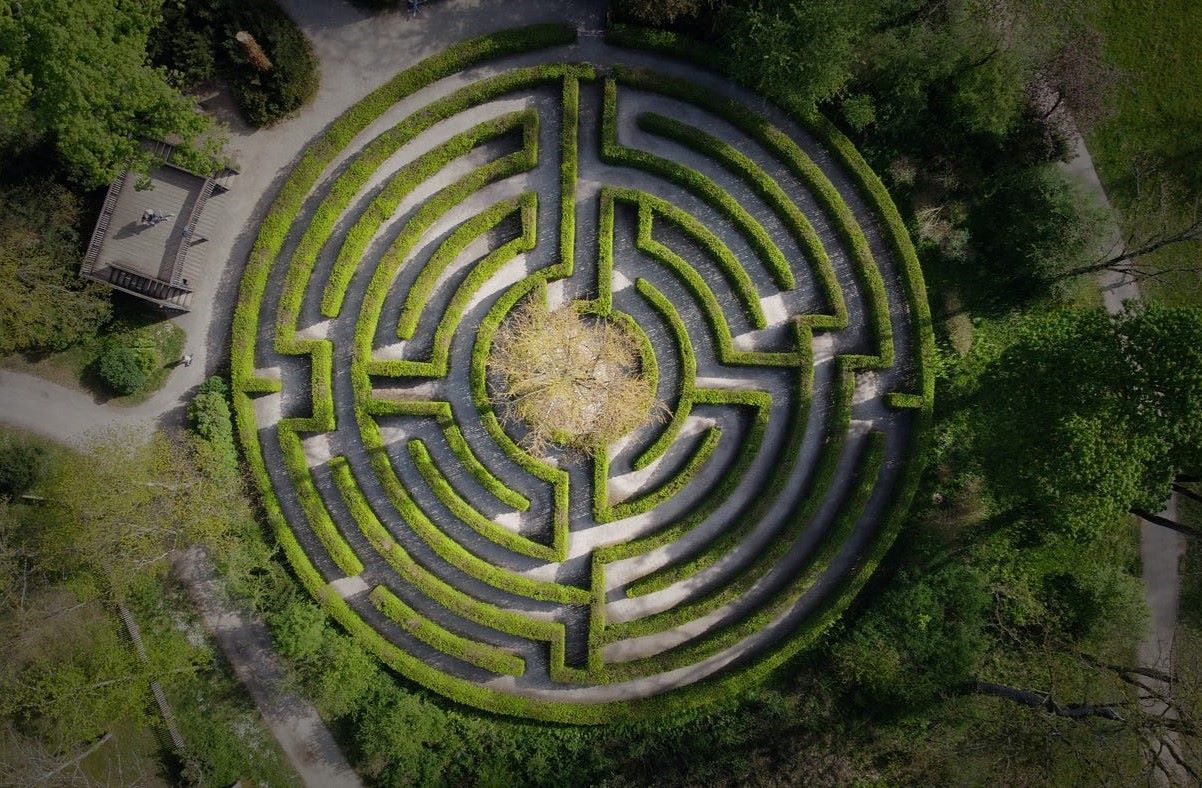Mystical Stone Labyrinths With Ancient Origins

Have you ever wondered about the secrets hidden within mystical stone labyrinths? These ancient structures, found in various parts of the world, have puzzled historians and archaeologists for centuries. Some believe they served as spiritual pathways, while others think they were used for rituals or even as traps for evil spirits. The intricate designs and precise construction of these labyrinths suggest a deep understanding of geometry and astronomy by their creators. Whether nestled in the forests of Europe or the deserts of the Middle East, each labyrinth tells a unique story. Ready to delve into the mysteries of these fascinating stone formations? Let's take a closer look at their origins and purposes.
Mystical Stone Labyrinths with Ancient Origins
Stone labyrinths have fascinated humans for centuries. These intricate designs, often shrouded in mystery, can be found in various parts of the world. Their origins and purposes remain subjects of intrigue and speculation. Let's explore some of the most captivating stone labyrinths with ancient roots.
Europe’s Enigmatic Labyrinths
Europe boasts several ancient stone labyrinths, each with its own unique history and charm.
Troy Town, England
Located on St. Agnes in the Isles of Scilly, Troy Town is a classic example of a stone labyrinth. Believed to date back to the Bronze Age, it has been a site of mystery and legend for centuries. Local folklore suggests it was built to trap malevolent spirits.Chartres Cathedral, France
The labyrinth in Chartres Cathedral, constructed in the early 13th century, is one of the most famous medieval labyrinths. Pilgrims walked its path as a form of penance or meditation. Its intricate design continues to draw visitors from around the globe.Visby, Sweden
On the island of Gotland, near the town of Visby, lies a labyrinth known as Trojaborg. This ancient stone labyrinth is thought to have been used for rituals or as a protective symbol. Its exact age remains uncertain, but it is undoubtedly ancient.
Mysteries of the Mediterranean
The Mediterranean region holds some of the oldest and most intriguing stone labyrinths.
Knossos, Crete
The labyrinth of Knossos, associated with the myth of the Minotaur, is one of the most famous in history. While the actual labyrinth may not have survived, the ruins of the palace complex give a glimpse into the grandeur of Minoan civilization.Val Camonica, Italy
In the Italian Alps, Val Camonica is home to numerous rock carvings, including labyrinth designs. These carvings date back to the Iron Age and are believed to have had religious or ceremonial significance.
Ancient Labyrinths of the Americas
The Americas also feature ancient labyrinths, each with its own cultural significance.
Nazca Lines, Peru
The Nazca Lines include several labyrinthine designs etched into the desert floor. Created by the Nazca culture between 500 BCE and 500 CE, their purpose remains a mystery. Some theories suggest they were used for astronomical or religious purposes.Tucson, Arizona, USA
Near Tucson, the Tohono O'odham people created labyrinth designs known as "Man in the Maze." These labyrinths symbolize life's journey and the choices one makes along the way. They hold deep spiritual significance for the Tohono O'odham.
Asia’s Ancient Labyrinths
Asia, with its rich history and diverse cultures, also has its share of ancient labyrinths.
Ajanta Caves, India
The Ajanta Caves, dating back to the 2nd century BCE, feature intricate labyrinthine designs in their rock-cut architecture. These designs are believed to represent the complexity of the spiritual journey in Buddhism.Petra, Jordan
The ancient city of Petra, carved into the rock by the Nabataeans, includes labyrinthine passageways and structures. These intricate designs reflect the advanced engineering and architectural skills of the Nabataeans.
African Labyrinths of Antiquity
Africa's ancient labyrinths offer a glimpse into the continent's rich cultural heritage.
Great Zimbabwe, Zimbabwe
The ruins of Great Zimbabwe, dating back to the 11th century, include labyrinthine stone structures. These structures are thought to have served as royal enclosures or ceremonial sites, reflecting the complexity of the Shona civilization.Ras al-Jinz, Oman
Although technically in the Middle East, the stone labyrinths at Ras al-Jinz on the Arabian Peninsula are closely linked to African maritime trade routes. These labyrinths, dating back to the Bronze Age, were likely used for navigation or ritual purposes.
The Timeless Allure of Stone Labyrinths
Stone labyrinths hold a unique charm that transcends time. These ancient structures, often shrouded in mystery, continue to captivate modern explorers. Their intricate designs and historical significance offer a glimpse into the past, connecting us to ancient civilizations and their ways of life.
Visiting these labyrinths can be a profound experience. Walking through the winding paths, one can almost feel the presence of those who walked them centuries ago. It's a journey not just through space, but through time.
Whether you're a history buff, a spiritual seeker, or simply someone who appreciates the beauty of ancient architecture, stone labyrinths offer something for everyone. They remind us of the ingenuity and creativity of our ancestors, and their enduring legacy. So next time you come across one, take a moment to walk its paths and reflect on the stories it holds.

